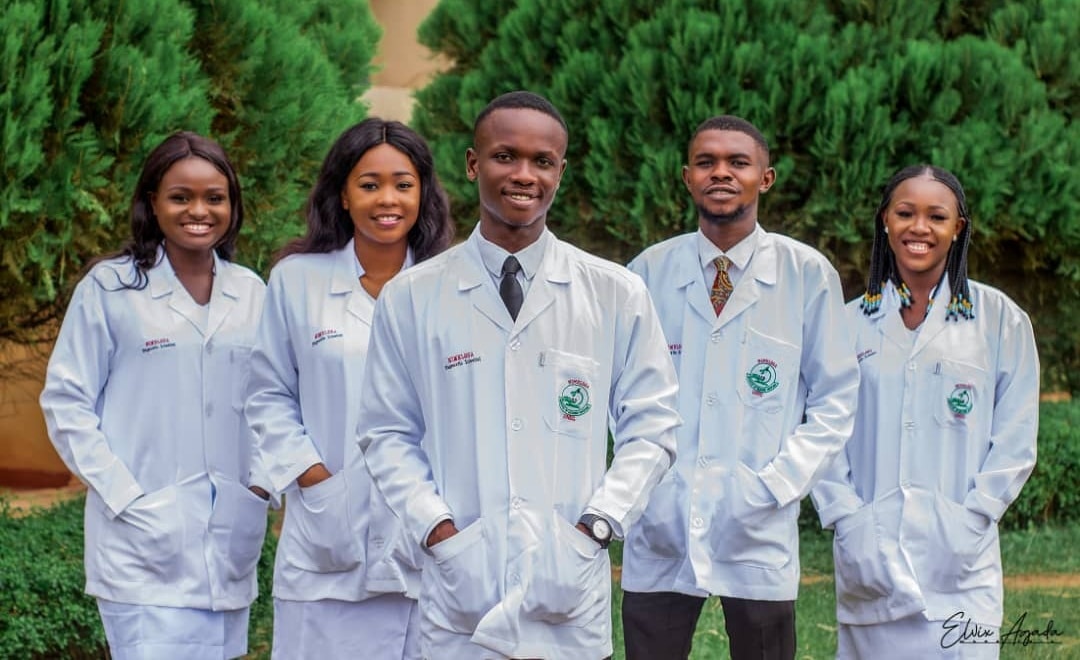This post contains the departmental course outline for third (3rd) year students in Medical Laboratory Science.
You can find the topics for both the first and second semesters.
You can check out the College of Medicine course outline for topics in Anatomy, Biochemistry and Physiology.
Table of contents
Medical Laboratory Course Outline
| SN | Course Code | Course Title | Unit |
|---|---|---|---|
| 1. | MLS 311 | Fundamentals of Clinical Chemistry | 3 |
| 2. | MLS 321 | Fundamental of Haematology | 3 |
| 3. | MLS 341 | Fundamental of Medical Microbiology | 3 |
| 4. | MLS 351 | Introductory Medical Immunology | 3 |
| 5. | MLS 331 | Basic Histopathology | 3 |
First Semester Course Outline
Here is the list of courses and topics for Medical Laboratory Science third-year first semester;
Fundamental of Haematology (MLS 321)
- Origin, Development and Functions of Blood Cells
- Structure and Functions of Red Blood Cells
- Synthesis and Breakdown of Hemoglobin
- Methods of Hemoglobin Estimations
- Method of Cell Counting
- Absolute Values
- Introduction to Haemostasis
- Principle and Mode of Action of Common Anticoagulants
- Principle of Hematological Stains
- Simple Test Use in Blood Coagulation
- Blood Flow – Normal and Abnormal Value
Basic Histopathology (MLS 331)
Introduction to Histopathology
- Fixation
- Autolysis
- Bacteria Decomposition
- Effects of Fixation
- Common Fixative Agents and Their Uses
- Secondary Fixation
- Post Fixation
- Post Chroming
- Post Mordant
- Fixation Pigments
- Decalcification
- Dehydration
- Clearing
- Infiltration/Embedding
- Frozen and Celliodin Sections
- Embedding Media
- Basic Histology of Organs
- Principles and Application of Exfoliative Cytology
- Collection and Fixation of Specimen for Cytological Examinations
Basic Pathology
- Tissue and Cellular Adaptation
- Cell Injury
- Inflammation
- Healing and Repairs
- Infectious Granulomas (Tb, Syphilis and Leprosy)
Introductory Medical Immunology (MLS 351)
- Historical Background of Histology
- Common Definitions/Terms in Histology
- Classification of Immunity: Adaptive & Innate Immunity
- Immunological Theories
- Development and Structures of Cells/Lymphoid Organs in The Immune System
- Cellular Interaction in Innate and Adaptive Immune System Expression
- Inflammation
- Regulation of Immune Defense Mechanism (Adaptive Immunity)
- Application of Immunology
Fundamental of Medical Microbiology (MLS 341)
- Introduction to Microbiology
- Anatomy of Bacteria Cell
- Bacteria Reproduction
- System of Identification of Bacteria
- Sterilization in Microbiology
- Disinfectants
- Antibiotics and Chemotherapy
- Antimicrobial Agents
- Bactericidal and Bacteriostatic Antibiotics
- Antibiotic Resistance
- Reasons for Bacteria Resistance
- Antibiotics Classification
- Bacteria Metabolism
- Definition and Scope of Microbiology
- Classification of Bacteria
- Classification and Nomenclature of Microbiology
- Growth Requirement for Microbiology
- Phylogenetic Tree of Three Domains
- Bacteria Cell Curve
- Culture of Viruses
- Nature of Viruses
- Serological Test in Chemical Virology
- Diagnosis of Viral Antigen
Fundamentals of Clinical Chemistry (MLS 311)
- Traditional and S.I. units in Clinical Chemistry; Reference values
- Gastric function test; Agents for Gastric stimulation; Ward procedures and Laboratory investigation of Gastric secretions.
- Intestinal funtion test; Digestion and absorption; Causes of Melabsorption, laboratory investigation of melabsorption.
- Renal function tests; functions of the kidney; Measurement of Renal plasma flow; Glomerular fltration rate; Creatinine Clearance; Insulin Clearance; Concentration and Dilution Tests, Urinary Acidification Tests, Urine specific gravity/osmolality dye excretion test.
- Water and Electrolyte metabolism.
- Acid base balance; Definition and causes of accidosis and alkalosis
- Blood buffers – Transport of blood gases; assessment of acid/base states
- Lipids; definiton and types of lipids
- Formation of free fatty acids, ketone bodies and lactate
- Measurement of plasma lipids and lipoproteins
- Plasma proteins and physiologic functions; factors affecting synthesis and catabolism
- Methods for the determination of total protein in serum
- Carbohydrate metabolism
- Blood glucose homeostasis; hyperglycaemia diabetes mellitus its causes and investigation; Hypoglycaemia – types, causes and investigation.
See also:
